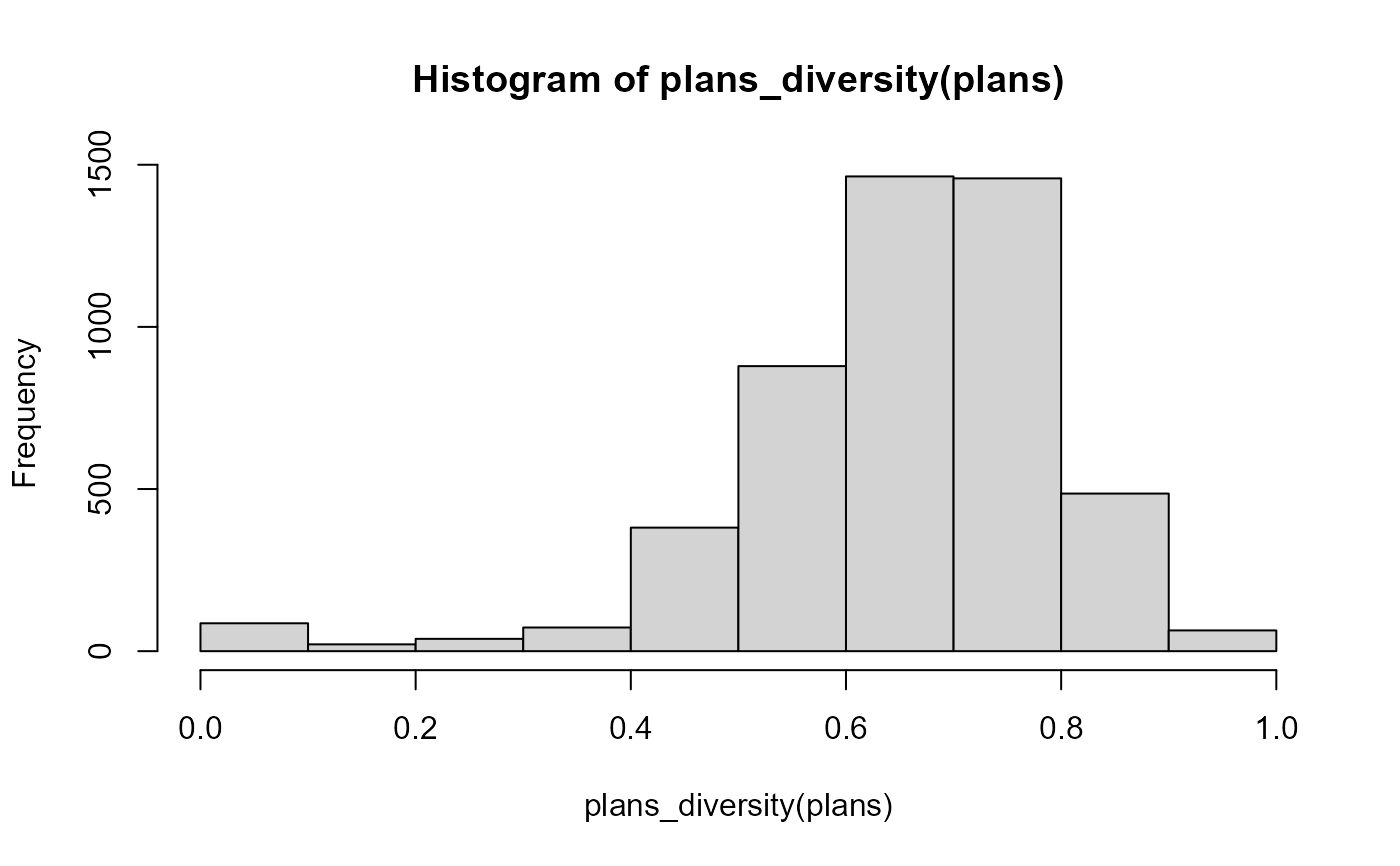Returns the off-diagonal elements of the variation of information distance matrix for a sample of plans, which can be used as a diagnostic measure to assess the diversity of a set of plans. While the exact scale varies depending on the number of precincts and districts, generally diversity is good if most of the values are greater than 0.5. Conversely, if there are many values close to zero, then the sample has many similar plans and may not be a good approximation to the target distribution.
Usage
plans_diversity(
plans,
chains = 1,
n_max = 100,
ncores = 1,
total_pop = attr(plans, "prec_pop")
)Arguments
- plans
a
redist_plansobject.- chains
For plans objects with multiple chains, which ones to compute diversity for. Defaults to the first. Specify "all" to use all chains.
- n_max
the maximum number of plans to sample in computing the distances. Larger numbers will have less sampling error but will require more computation time.
- ncores
the number of cores to use in computing the distances.
- total_pop
The vector of precinct populations. Used only if computing variation of information. If not provided, equal population of precincts will be assumed, i.e. the VI will be computed with respect to the precincts themselves, and not the population.
Examples
data(iowa)
ia <- redist_map(iowa, existing_plan = cd_2010, pop_tol = 0.01)
plans <- redist_smc(ia, 100, silent = TRUE)
hist(plans_diversity(plans))

